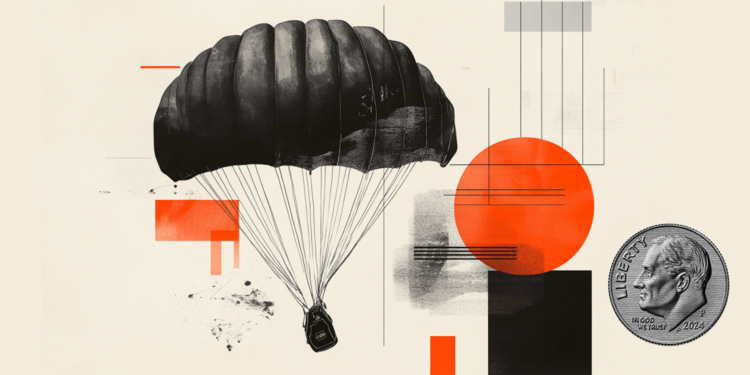- USD/CAD edges lower to near 1.4295 in Tuesday’s late American session.
- The US ISM Manufacturing PMI declined into contraction territory below 50 in March.
- Trump is set to implement tariffs on US trading partners on Wednesday.
The USD/CAD pair extends the decline to around 1.4295 during the late American session on Tuesday. The US Dollar (USD) weakens against the Canadian Dollar (CAD) after US economic data showed softness in the manufacturing sector ahead of tariff announcements from the Trump administration due Wednesday.
US manufacturing contracted in March, with the ISM Manufacturing Purchasing Managers Index (PMI) dropping to 49.0 from 50.3 in February. This figure came in below the market expectation of 49.5. This comes as concerns mount about how much tariffs will raise prices for consumers and businesses.
Trump said that he will impose “reciprocal tariffs” on Wednesday, suggesting that many countries with their own duties on US goods could suddenly face new trade barriers. The White House stated that Trump’s forthcoming tariffs will take effect right after they are unveiled on Wednesday. However, the lack of clarity on trade policies, including the scope and severity of the tariffs and how they will be calculated, could undermine the Greenback in the near term.
Meanwhile, a rise in Crude Oil prices might underpin the commodity-linked Loonie in the near term and create a headwind for USD/CAD. It’s worth noting that Canada is the largest oil exporter to the United States (US), and higher crude oil prices tend to have a positive impact on the CAD value.
Canadian Dollar FAQs
The key factors driving the Canadian Dollar (CAD) are the level of interest rates set by the Bank of Canada (BoC), the price of Oil, Canada’s largest export, the health of its economy, inflation and the Trade Balance, which is the difference between the value of Canada’s exports versus its imports. Other factors include market sentiment – whether investors are taking on more risky assets (risk-on) or seeking safe-havens (risk-off) – with risk-on being CAD-positive. As its largest trading partner, the health of the US economy is also a key factor influencing the Canadian Dollar.
The Bank of Canada (BoC) has a significant influence on the Canadian Dollar by setting the level of interest rates that banks can lend to one another. This influences the level of interest rates for everyone. The main goal of the BoC is to maintain inflation at 1-3% by adjusting interest rates up or down. Relatively higher interest rates tend to be positive for the CAD. The Bank of Canada can also use quantitative easing and tightening to influence credit conditions, with the former CAD-negative and the latter CAD-positive.
The price of Oil is a key factor impacting the value of the Canadian Dollar. Petroleum is Canada’s biggest export, so Oil price tends to have an immediate impact on the CAD value. Generally, if Oil price rises CAD also goes up, as aggregate demand for the currency increases. The opposite is the case if the price of Oil falls. Higher Oil prices also tend to result in a greater likelihood of a positive Trade Balance, which is also supportive of the CAD.
While inflation had always traditionally been thought of as a negative factor for a currency since it lowers the value of money, the opposite has actually been the case in modern times with the relaxation of cross-border capital controls. Higher inflation tends to lead central banks to put up interest rates which attracts more capital inflows from global investors seeking a lucrative place to keep their money. This increases demand for the local currency, which in Canada’s case is the Canadian Dollar.
Macroeconomic data releases gauge the health of the economy and can have an impact on the Canadian Dollar. Indicators such as GDP, Manufacturing and Services PMIs, employment, and consumer sentiment surveys can all influence the direction of the CAD. A strong economy is good for the Canadian Dollar. Not only does it attract more foreign investment but it may encourage the Bank of Canada to put up interest rates, leading to a stronger currency. If economic data is weak, however, the CAD is likely to fall.

